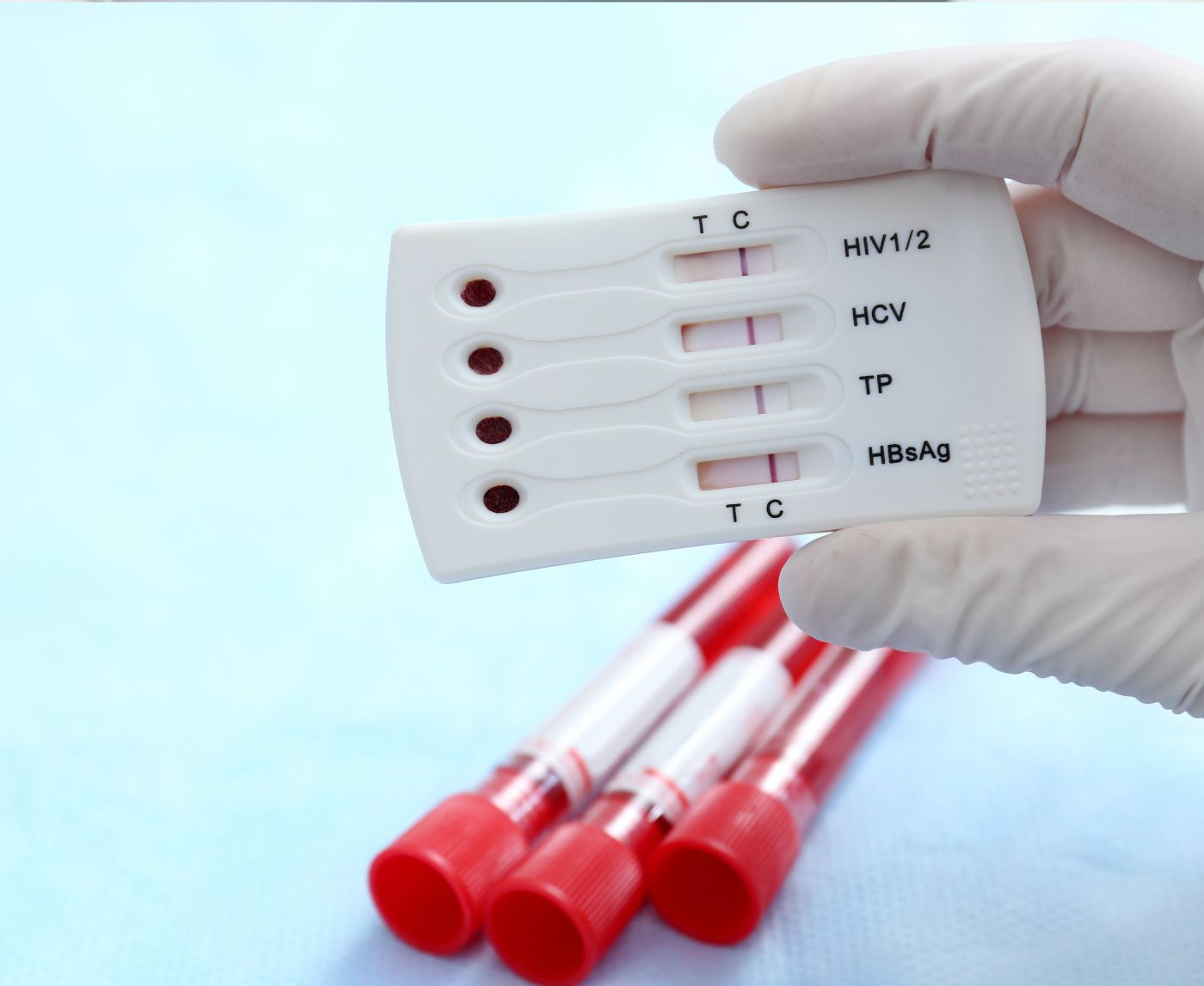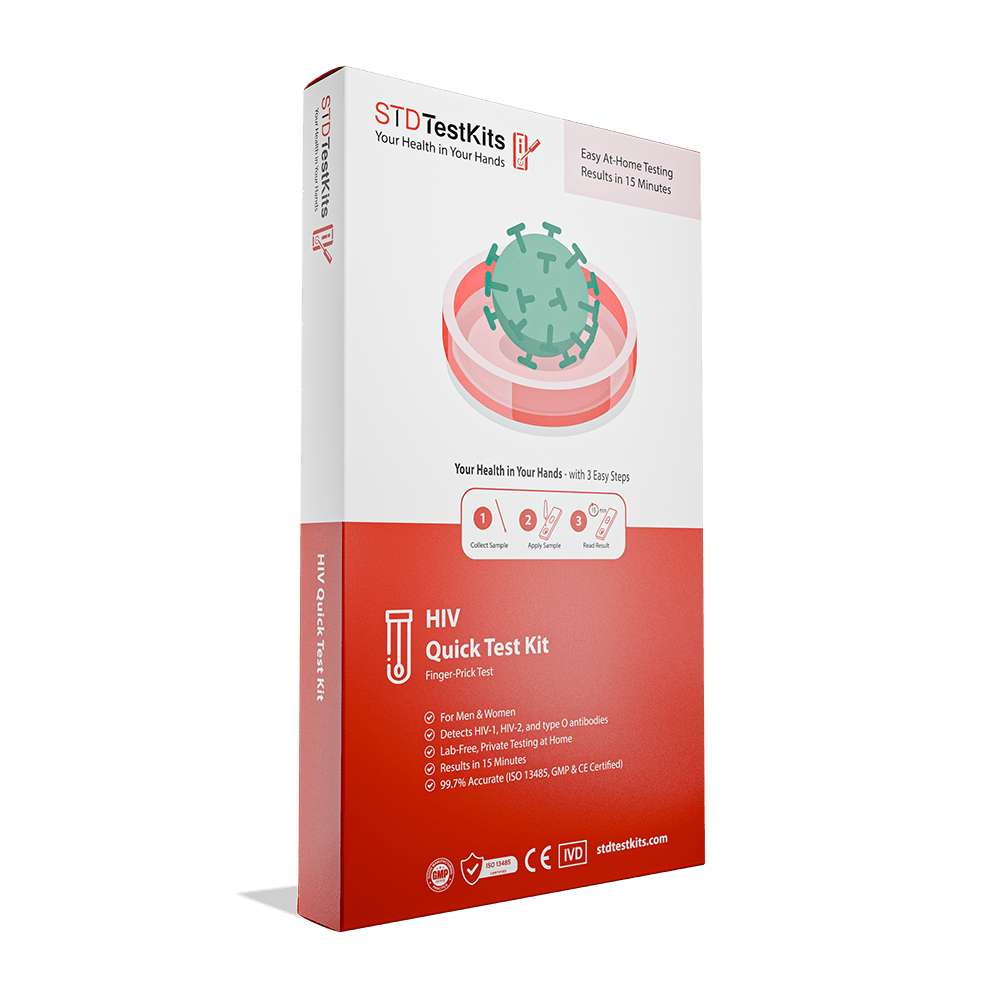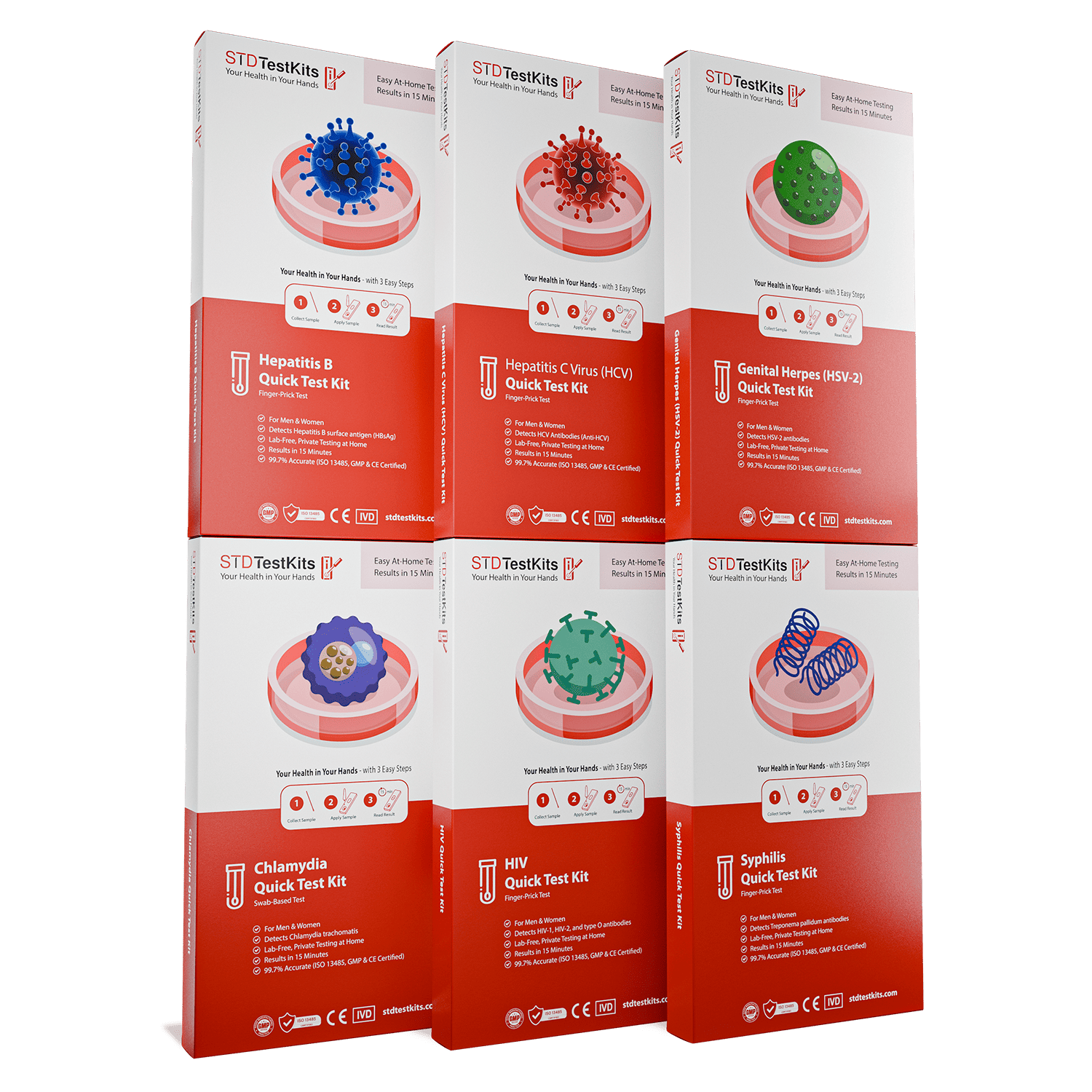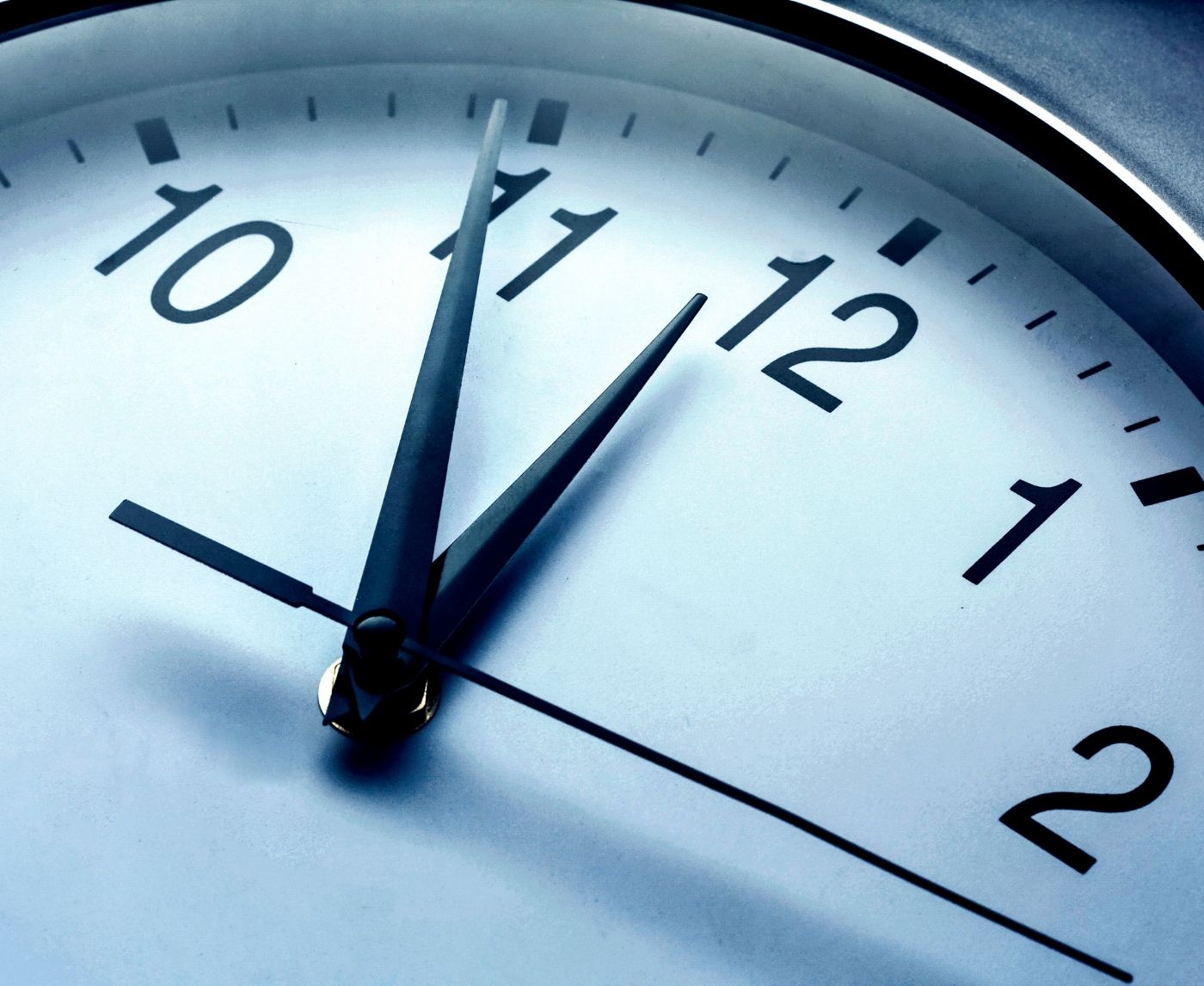When to Test for Syphilis After Exposure (And When Not To)
Quick Answer: HIV tests are most accurate when taken at least 2 to 4 weeks after exposure. Testing too early can result in a false negative, especially during the window period when the virus is undetectable by most tests. If you’re experiencing symptoms, don’t ignore them, but don’t panic. The right test at the right time makes all the difference.
This Guide Is for You If the Fear Won’t Quit
If you're stuck in a loop, Googling “early signs of HIV” at 3AM, checking your body for new symptoms every hour, reading Reddit threads until your eyes burn, this article is written for you. You might be someone who had unprotected sex, someone who didn’t know their partner’s status, or someone whose anxiety is screaming louder than any clear answer.
And if your mind keeps asking the same question, “Is this just anxiety, or did I really catch something?”, you’re exactly the reader we’re here for. We see you. We know what it’s like to wait, to wonder, to sweat through a fever and not know if it’s stress or something much more serious.
Our goal here isn’t to scare you or tell you what you already know. It’s to give you the full picture, what HIV symptoms actually look like, what anxiety can mimic, how long it really takes for a test to work, and what to do at every stage of the waiting game.

People are also reading: Too Soon to Test? The Hepatitis B Window Period Explained
What Early HIV Symptoms Feel Like (And Why They Can Lie)
Jared, 27, first noticed the sore throat three days after a weekend hookup. He didn’t think much of it, until a low-grade fever kicked in. Then the night sweats started. Google led him to one answer: acute HIV infection.
“I couldn’t sleep. I was checking my lymph nodes every hour,” he said. “It was like my body was betraying me.”
Acute HIV symptoms, sometimes called seroconversion illness, can appear 2 to 4 weeks after exposure. But here's the twist: many people never feel anything. And when they do, those symptoms often look just like the flu or a bad cold. Sore throat, swollen glands, muscle aches, fatigue, fever, none of it is unique to HIV. It’s frustratingly vague, especially for someone already feeling anxious.
Meanwhile, anxiety can ramp up physical symptoms that feel just as real. Panic can cause chest tightness. Stress can trigger fatigue, nausea, headaches, even a mild fever. One study in the Journal of Psychosomatic Research showed that anxiety disorders can manifest with somatic symptoms nearly indistinguishable from viral illnesses.
So how do you tell the difference? You often can’t, not without testing. And that’s where things get complicated.
The HIV Window Period Explained (And Why It’s So Important)
Time is an invisible limit on every HIV test. Your body needs time to make enough markers, like antigens, antibodies, or viral RNA, after you have been exposed to the virus for a test to find it. The time between these two events is called the window period. If you test during this window, you might get a false negative even if you are infected.
Let’s break it down using the most common test types and how soon they detect HIV with accuracy:
Table 1. HIV window periods by test type. Testing before these timelines increases the chance of a false negative.
If you test too early, a negative result doesn’t mean you’re in the clear. It means you may need to test again, once your body has had time to show what’s really going on.
A Case for Waiting: The Retest That Changed Everything
Kayla, 32, took a rapid test five days after a condom slipped during a Tinder hookup. It came back negative. Relieved, she tried to forget it, until the chills started. Her fever peaked on day 15. Another test, this time a 4th generation lab test, came back reactive.
Her first test wasn’t wrong, it was just too soon.
“If I’d stopped there, I wouldn’t have gotten treatment early,” she said. “I’m so glad I followed my gut and tested again.”
This isn’t about panic. It’s about planning. Testing too soon can feel productive, but if the result is a false negative, it can delay treatment and increase transmission risk if someone becomes sexually active again thinking they’re in the clear.
Think of your first test as a checkpoint. But let your follow-up test be the one you trust. That’s the one that counts.
Still Panicking? Here’s What You Can Do Right Now
If you’re in the window period and feeling overwhelmed, you don’t have to just sit with the fear. There are real, grounded steps you can take today to feel more in control, even before you test.
Start by mapping your exposure date. Count forward to see when each test type becomes reliable. If it’s still early, consider booking an RNA or 4th generation test with a trusted provider or order a discreet at-home test for the right date. STD Rapid Test Kits offers a reliable HIV test kit you can use privately at home when the time is right.
And most importantly, give yourself grace. Anxiety doesn’t mean your fear is fake. It means you care. You’re watching your body, you’re doing the research, and you’re trying to protect yourself and others. That matters. And soon, you’ll have real answers.
Choosing the Right Test for Where You Are (Literally and Emotionally)
When it comes to HIV testing, there's no one-size-fits-all option, especially if you’re juggling panic, privacy concerns, or rural access. Some people need a same-day answer. Others want the gold-standard lab confirmation. And for many, just getting to a clinic is emotionally or physically out of reach. That’s where understanding your testing options becomes just as crucial as choosing when to test.
Let’s walk through what each option really feels like, not just what it tests for.
Table 2. HIV testing options by lifestyle and urgency. The best test is the one you can actually take, on time and with clarity.
For those who are spiraling but afraid to walk into a clinic, an at-home test may be the first step toward control. For those who want confirmation after symptoms emerge, a 4th generation test through a lab or provider might offer more certainty. And for anyone with high-risk exposure within the last 72 hours, consider urgent care or telehealth access to PEP (post-exposure prophylaxis).
What Exposure Scenarios Actually Matter (And Which Don’t)
If your brain keeps looping back, “But what if I got it from oral?”, this section’s for you. Let’s strip away the shame and sort the real risks from the imagined ones. Not every exposure carries the same likelihood of HIV transmission. But your fear doesn’t know that. Your fear will treat a one-second condom slip like a blood transfusion.
Mina, 25, had protected sex with someone she barely knew. The condom didn’t break. No fluids were exchanged. But after learning he had multiple partners, she couldn’t shake the thought that she might have HIV.
“I felt fine,” she said. “But I was convinced I had every symptom.”
According to the CDC's transmission risk estimates, here’s how some common scenarios compare:
Table 3. HIV transmission risk by act. If you’re feeling terrified after a low-risk act, your fear might be louder than your exposure.
Still, fear doesn’t always follow logic. If your anxiety is rooted in real uncertainty or a lapse in protection, testing is valid, and necessary. But if you’re obsessing after zero-risk contact, it may help to talk to a clinician or mental health provider as part of your HIV anxiety management. Yes, that’s a real thing, and no, it doesn’t mean you're overreacting.
Can Anxiety Really Mimic HIV Symptoms?
Short answer: absolutely. Stress can manifest in incredibly physical ways, tight chest, nausea, feverish chills, headaches, rashes, sore throat, night sweats, and more. Add hyper-awareness to the mix, and every itch feels like proof of infection.
One study published in Psychiatry Research found that people with health anxiety often report physical sensations so severe they mimic infectious disease symptoms. When paired with guilt or fear after a sexual encounter, the mind can create a feedback loop that keeps confirming your worst fears, even when there’s no medical basis.
But here’s the tricky part: some people really do get HIV symptoms, and some don’t. Some people experience no symptoms at all. That means you can’t rely on your body alone to tell you what’s happening. Only a test can do that. Not your Googling. Not the thermometer. Not the Reddit thread you saved last night.
So, if you're asking, "Am I just anxious?", maybe. But maybe not. That’s why testing is so powerful: it replaces doubt with data. It gives you the peace your anxiety won’t let you feel otherwise.
If you need a first step, you can order a discreet at-home HIV test kit and plan to test during your accurate window. That act alone can stop the spiral.
When You Should Retest, and Why It’s Not Overkill
Let’s say you’ve already tested once. Maybe it was a rapid test you found at the pharmacy. Maybe it was an at-home kit you ordered in a moment of panic. The result? Negative. But your chest still feels tight. Your throat still tickles. Your search history is still full of questions like “Can HIV symptoms come and go?” or “Is it possible to test negative and still have HIV?”
This is where retesting enters the conversation, not as overkill, but as clarity. The CDC and WHO both recommend follow-up testing after any potential exposure, especially if your first test was taken during the window period. It’s not paranoia. It’s protocol.
Raj, 39, tested negative at day 11 using a rapid antibody test.
“It calmed me for maybe a day,” he said. “But then I kept reading about window periods. I retested at six weeks with a lab test. That one, I trusted.”
Here’s what we know: most modern tests, especially 4th generation lab tests and RNA (NAAT) tests, are highly accurate. But their accuracy depends on timing. If you test before your body has produced detectable levels of antibodies or viral markers, the test might come back negative even if you’re infected. That’s why a negative isn’t always the final word unless it’s paired with a second, properly timed test.
General guidance looks like this:
- First test: 2–3 weeks after exposure (if using RNA or 4th gen test)
- Follow-up test: At 6 weeks to confirm result
- Final test: At 12 weeks if using a rapid or 3rd gen test
We get it, waiting is hard. But retesting doesn’t mean you were wrong to test early. It means you’re being thorough. It means you want the truth, not just a quick fix.
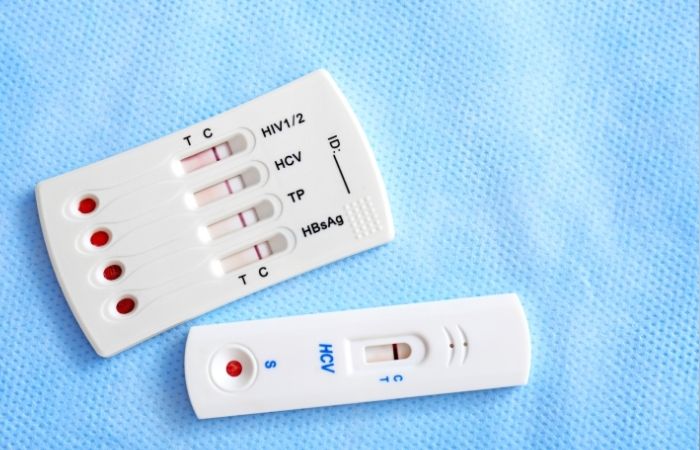
People are also reading: Can You Trust a Hepatitis B Home Test? Here’s the Truth
If You’ve Taken PEP, Your Timeline Is Different
Post-Exposure Prophylaxis (PEP) is a 28-day medication regimen that can prevent HIV after a high-risk exposure. But it also shifts your testing timeline. Because PEP can temporarily suppress viral activity, tests taken during or immediately after the 28-day course may return negative results even if infection occurred.
The U.S. Department of Health and Human Services recommends the following testing protocol for people who take PEP:
- Baseline: Before starting PEP
- Follow-up: 4 to 6 weeks after completing the 28-day course
- Final confirmation: At 3 months post-exposure
If you're not sure what to do next, don't guess. Reach out to a local HIV clinic, use a telehealth platform that specializes in STI care, or revisit your test with fresh eyes once the timing lines up.
How Privacy, Packaging, and Discreet Testing Really Work
If you’re hesitating to test because of shame, stigma, or fear of someone finding out, know this: you’re not the only one. Fear of judgment keeps thousands of people from testing every year. That’s why at-home testing isn’t just convenient. It’s protective.
Tamika, 23, ordered her test after three weeks of silence.
“I just couldn’t bring myself to walk into a clinic,” she said. “But getting the box at home, it felt like I was finally doing something for myself.”
Most at-home HIV tests ship in discreet, unbranded packaging. There's no label on the outside that says “STD” or “HIV.” Inside, instructions are clear, the materials are compact, and results stay private. Many kits can be used in your bathroom, your car, even on a lunch break if you need to. You stay in control the entire time.
And if you’re worried about results being saved or sold, don’t be. Reputable companies follow strict confidentiality rules and don’t report results to anyone unless you ask. You can test, get answers, and take action without anyone ever knowing. That’s the kind of control anxiety can’t give you, but testing can.
What If the Result Is Positive?
Let’s face it, this is the real fear. Not the symptoms. Not the test. The result. The moment that turns everything from a what-if into a what-now.
If you test positive for HIV, take a breath. Then take another one. You are not alone. You are not doomed. You are not untouchable.
Modern HIV treatment is highly effective. Most people who start antiretroviral therapy (ART) live long, healthy lives and reach undetectable levels of the virus, meaning they can’t transmit HIV to others. That’s called U=U (Undetectable = Untransmittable), and it’s not just science, it’s freedom.
If your test is positive:
- Get a confirmatory test through a clinic or lab
- Connect with a care provider who understands HIV treatment
- Ask about your options for ART and viral load monitoring
- Reach out for support, there are real communities ready to stand with you
Devon, 34, found out he was positive after taking a rapid test at home.
“I cried,” he said. “Then I got angry. Then I got a care team, and that changed everything. Now I’m undetectable, dating again, and more in control of my body than I’ve ever been.”
If you’ve been putting off testing because you're afraid of a positive, let this be your sign: a positive isn’t the end. It’s the start of something treatable, livable, and human.
If you're ready to take that first step, whether you're worried, curious, or just done living in limbo, start here: Order your confidential HIV test kit. What you find might just give you the peace your brain hasn’t let you feel.
FAQs
1. Can anxiety really trick me into thinking I have HIV?
Yes, and it’s more common than you think. Anxiety can send your body into overdrive: heart racing, throat scratchy, weird fatigue, random chills. You start Googling, and suddenly every normal sensation feels like a red flag. But here’s the deal, your brain is trying to protect you. Unfortunately, it’s not great at distinguishing between danger and a bad WebMD rabbit hole. If you're spiraling, a properly timed HIV test can stop that fear from running the show.
2. How soon is too soon to test for HIV?
If it’s been less than 10 days since exposure, any test is likely too early to trust. The virus needs time to show up in your system, think of it like baking bread: it rises when it rises, not when you're ready to eat. For most modern tests, the sweet spot is 2 to 6 weeks post-exposure. So yes, early testing feels proactive, but testing at the right time is what gives you peace that actually lasts.
3. Can I get a false negative if I test too early?
Absolutely. It's like showing up to a movie before it starts and saying, “Well, I guess no one’s here.” The virus might still be getting detectable. That’s why so many health pros recommend a follow-up test, even if your early one came back negative. It’s not over-testing. It’s being smart with the science.
4. Do HIV symptoms always show up right away?
Nope. Some people feel like they’ve been hit with a mild flu around 2–4 weeks in. Others feel totally fine, and stay that way for years. That’s the mind-mess: no symptoms doesn’t mean no infection. And symptoms, when they do happen, are so vague they can be anything. The only way to know is to test.
5. What’s the actual risk from oral sex?
Pretty low. Unless there’s blood, open sores, or a ton of viral load involved, oral sex isn’t a high-risk act. But fear isn’t rational, it doesn’t care about statistics. So if your anxiety is louder than the data, it’s okay to test for peace of mind. Just know the science is on your side here.
6. Can I really test for HIV at home?
Yes, and it’s honestly kind of a game-changer. You don’t have to sit in a waiting room with that pit in your stomach or explain your sex life to someone in a white coat. At-home kits let you test on your terms, in your space, on your schedule, no judgment. Just make sure you’re testing at the right time. And read the instructions like they actually matter (because they do).
7. I tested negative but still feel weird. Now what?
First: you’re not “crazy.” That lingering unease is real, and common. If you tested early, you might still be in the window period, so a retest in a few weeks is smart. If you tested at the right time and it came back negative, your body might just be reacting to stress. Either way, it’s okay to feel unsettled. You did the right thing by testing. Now let’s finish the story with a follow-up if needed.
8. I took PEP, does that change when I should test?
Yep. If you took post-exposure meds (PEP), you’ll want to test right before starting, then again about a month after finishing the 28-day course, and once more around the 3-month mark. PEP can delay detectable signs of HIV, so early tests might give you a false sense of security. Patience here isn’t just a virtue, it’s protocol.
9. What if I test positive?
Take a deep breath. Then another. A positive HIV result isn’t the end of your life, it’s the beginning of a new chapter, and one with incredible treatment options. Most people who get on medication become undetectable (meaning they can’t pass it on) and live long, full, drama-free lives. You’ll get care. You’ll get support. You’ll be okay. Testing positive is heavy, but you’re not carrying it alone.
10. Is there such a thing as testing too much?
Not really, but testing too early too often can mess with your head. One early negative test followed by a properly timed one is better than five rapid tests in a row that all leave you doubting. Test when it counts. Then take a breath and give yourself space to believe the result. If you still feel unsure, testing again later is valid, but don’t let fear become a full-time job.
You Deserve Answers, Not Assumptions
If your mind is racing and your chest is tight, let this be your reminder: fear isn’t the same as fact. Whether your symptoms are real, imagined, or a brutal mix of both, you deserve answers grounded in science, not spirals. Testing is a way to take back power. It doesn’t mean you’re dirty. It doesn’t mean you’re broken. It means you care enough to check.
You can test discreetly, safely, and on your own terms. Whether you're worried about a hookup, confused by symptoms, or just done guessing, start with one action that gives you clarity. Order your confidential HIV test kit and find out where you really stand. Because living in the unknown is always worse than knowing the truth.
How We Sourced This Article: We combined current guidance from leading medical organizations with peer-reviewed research and lived-experience reporting to make this guide practical, compassionate, and accurate. In total, around fifteen references informed the writing; below, we’ve highlighted some of the most relevant and reader-friendly sources.
Sources
2. Getting Tested for HIV — CDC
3. NIH HIVinfo — HIV Testing Fact Sheet
4. StatPearls — HIV Testing (NCBI Bookshelf)
5. Time Until Emergence of HIV Test Reactivity — Clinical Infectious Diseases
About the Author
Dr. F. David, MD is a board-certified infectious disease specialist focused on STI prevention, diagnosis, and treatment. He blends clinical precision with a no-nonsense, sex-positive approach and is committed to expanding access for readers in both urban and off-grid settings.
Reviewed by: Jamal R. Khan, MPH | Last medically reviewed: October 2025
This article is for informational purposes and does not replace medical advice.




